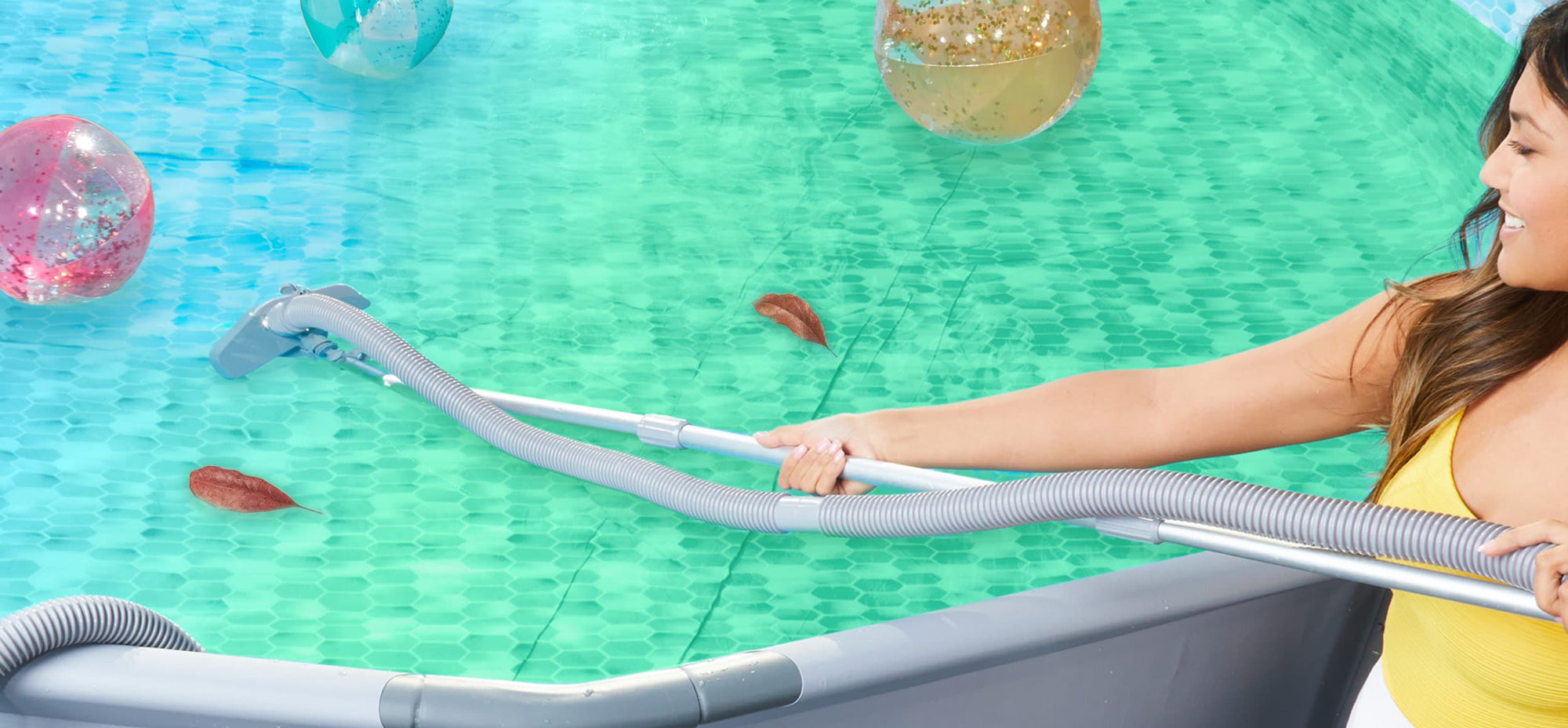Maintaining a pristine pool is always the goal, but nature may have other plans. Meet algae, the most common culprit behind cloudy or green water. Algae growth can eventually turn your above ground pool from paradise to pond. Here’s how to identify, prevent and treat this common pool ailment.
Algae Guide
These plant organisms come in three common types:

- Green Algae: The most popular, this turns your water green and can slime up floors and surfaces.
- Yellow (or Mustard) Algae: This shows up as yellowish-brown patches and is often resistant to chlorine
- Black Algae: It appears as dark spots that cling to surfaces, filters and pool ladders, overworking your scrubbing brush.
Causes of Algae Growth
So, what gets algae in a frenzy? Let’s break it down:
- Warm Temperatures: Algae love growing in warm weather.
- Poor Circulation and Filtration: If water isn’t moving fast enough, it gives algae the ideal conditions to grow.
- Low Sanitizer Levels: Without enough chlorine or bromine, algae will appear.
- Organic Debris: Leaves and dirt are like a five-star meal for algae.
- High pH or Alkalinity Levels: If your water chemistry is unbalanced, it’s a green light for algae growth.
Identifying Algae in Your Above Ground Pool
Spotting algae early can save you from a messy situation. Here’s what to look for:
- Green, cloudy water
- Slimy pool walls and bottom
- Dark spots
Pool Care Prevention
Prevention is way more fun than treatment! Here are some tips to keep your pool algae-free, plus check out our cheat sheet for pool maintenance.
- Vacuum and brush your pool weekly.
- Run the filter pump for 8-12 hours a day to keep the water flowing.

- Keep your pool covered when not in use to minimize direct sunlight and debris.
Treating Algae Spots
Spotted some algae? Time to act!
- Grab your skimmer and remove leaves, bugs and any debris. This helps the chlorine do its job.
- Turn off the pump for 12–24 hours to let the algae and fine particles settle to the bottom. Then vacuum to waste to clear out any leftover debris.
Treating an Algae Bloom
If you’re uncertain about tackling the algae yourself, visit your local pool store to learn more about how to shock your pool correctly.
- Turn the Pump On: Keep it running 24/7 to keep the algae on the run.
- Brush: Give those surfaces a good scrub to break up the algae party.
- Shock: Add liquid chlorine based on your pool size and the severity of the bloom. The water should turn from green to cloudy blue gray.
- Vacuum: Once the water is cloudy, turn off the pump for another 12–24 hours to let the dead algae settle, then vacuum to waste.
Now that you’re up to date on algae, you can keep your pool sparkling clean no matter what the weather brings. Remember that regular maintenance and a little vigilance are your best defense against algae invaders.




